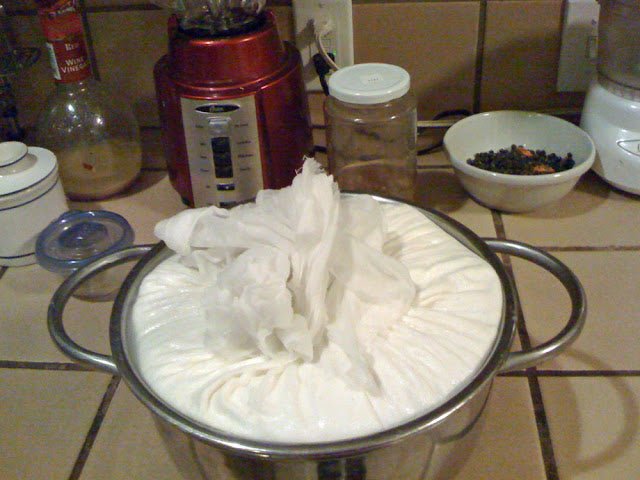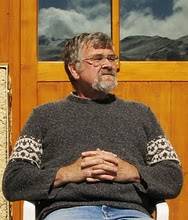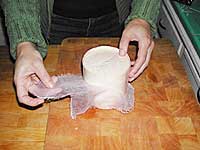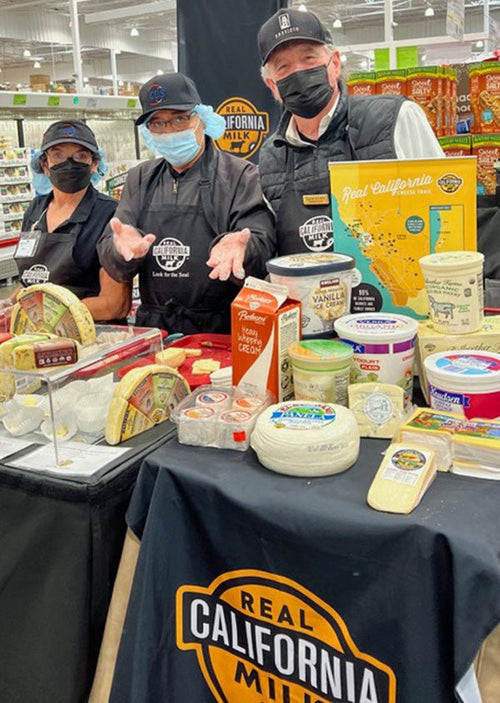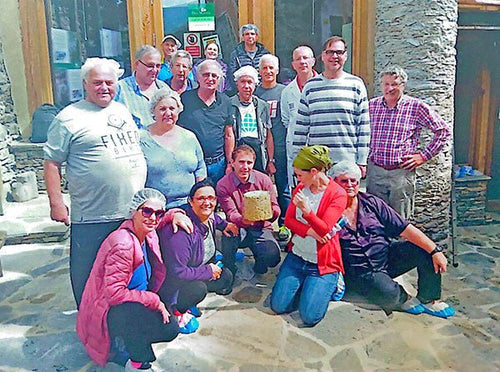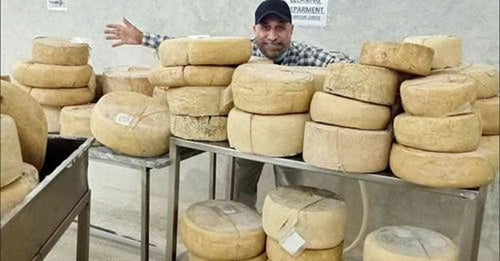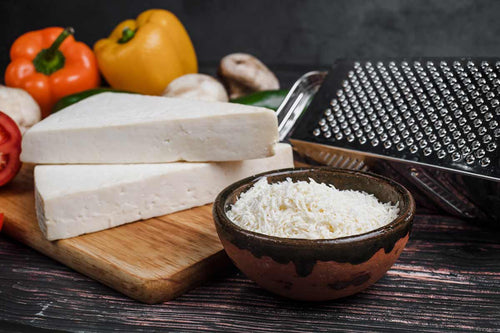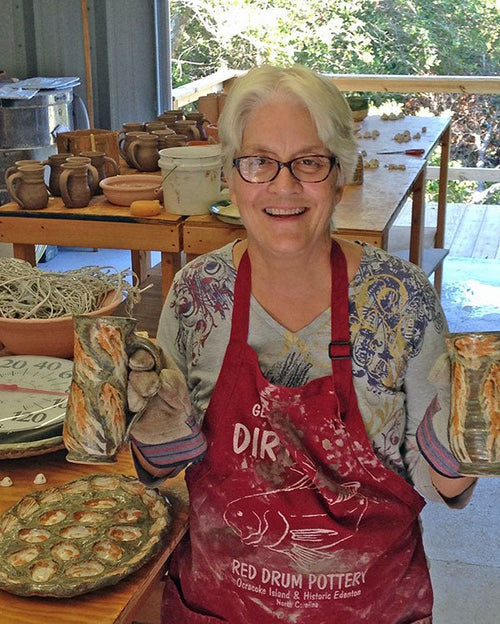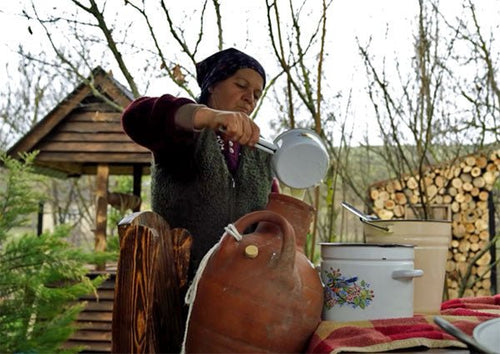3 Weeks at a Cheetah Conservancy
Janie Zencak and her husband have a small farm in Cle Elum, Washington they call the Funny Farm. They have two children- Victoria,14 and Peter,16. Janie has homeschooled them since 2002.
 |
| Janie Zencak and cheetahs |
They have pigs, chickens, a dog, cats and 9 goats (3 milking). Janie certainly qualifies as a “master” home cheese maker. With her goat’s milk, she makes her own fromage blanc, chevre, mozzarella, ricotta, “fresh”, fromagina, pressed garlic chive cheese, yogurt, kefir and quark. (When she had a Jersey, she made other cheeses like brie, cheddar, jack, ice cream, sour cream and butter.)
 |
| Victoria, Janie’s daughter, with Sinay,a female about 5 months old. She is getting a very rough lick! |
This past winter, Janie spent 3 weeks at a Cheetah Conservancy, run by the Cheetah Conservation Fund (CCF) in Namibia, teaching the kitchen staff to make goat cheese. Her 14 year old daughter, Victoria, went with her.
How did this trip come about?
My husband’s employer, Pegasus-Global Holdings, supports CCF financially. Last year, while making her fundraising rounds in Seattle, Laurie Marker came to Cle Elum, Washington to visit Kris Nielsen, Pat Galloway and Jack Dignum (owners of Pegasus) personally.
 |
| Janie and Kaijay, the “monster” boy who likes to challenge authority. |
During Laurie’s conversation with them, she stated that she had acquired a herd of dairy goats from South Africa and wanted to start making cheese to sell in the gift shop and serve to visitors with meals.
Immediately, Pat told her that she would have to meet me (I live 1/3 mile away). Unfortunately, I was at work at the time, so they brought my daughter (who was 13 at the time) over to meet Laurie.
They had a grand chat, and then Laurie stopped at our house to see the goats and learn more about what we do here at our home. I didn’t meet her because she had to be back in Seattle for a fund-raising dinner before I came home from work.
 |
| Anne (their Cheetah geneticist, from Germany), Janie, Dr. Laurie Marker (CCF Founder), Victoria (my daughter), staff member Marjolein (Belgium), and volunteers Laura (Oregon) and Carol (Maryland). |
Later that evening, there was a company dinner that my husband and I attended, and during the opening toast it was announced that the company was sending us (Victoria and I) to Africa! I was not prepared for that at the time, as our goats were in full milk so I went into a panic over logistics.
 |
| Hut we stayed in (warthog stood on concrete pad in front) |
In the end, the announcement was in May, and we left in December. So I had time to dry off and breed my goats before I left. The guys, who had to stay home while we went, would not have wanted to deal with milking as well as all the other extra chores you get when two people are gone for 3 weeks!
Like many areas of the country this year, we had a hard winter and it was no small sacrifice for my son and husband to hold down the fort while we were gone (neither of them are really animal people). That’s how it started…….
 |
| Janie |
How did it go?
Well, we departed on December 28 for London and departed London for Windhoek, Namibia on the evening of January 1, 2011. I must tell you that the travel is HARD on the body!
When I arrived, we spent several days making various cheeses and deciding what we would focus on for their commercial production. (They have 9 milking goats.)
They decided to pursue chevre, feta, the pressed garlic/chive cheese from “Goats Produce II” (recipe below), and yogurt. We chose the yogurt because the Conservancy feeds 30+ people every day, and they go through LOTS of yogurt. So that becomes a cost saving issue for them.
 |
| Sherien, one of the cooks |
I spent 11 to 13 hours a day for two weeks- processing milk, making mother cultures, training cooks how to make cheese, teaching local university students majoring in agricultural sciences how to make cheese, and cleaning, cleaning, cleaning!
Hygiene was a priority. Keeping the kitchen clean. Keeping the goats clean. Keeping the milk clean.
That, in itself, is a huge undertaking in an area that has limited water 3 months of the year. No one wants to “waste” water, which is how they see boiling instruments and cheese cloth, mopping and “excessive” dish washing, which I was doing.
 |
| Rosie (the vet tech) and Victoria working with a small herd of kids |
One circumstance that we ran into that I am not sure how to solve is that with the humidity in the summer, the boiled, sterilized cheese cloth takes so long to dry that it becomes inoculated with the local wild yeasts, and then your cheese gets destroyed. If you “cover it” in any way, it just doesn’t dry. Only fresh cheese cloth works, at least when the humidity is so high. Maybe this June they will be able to dry it quicker during the dry season (their winter). That remains to be seen. (Send ideas to Moosletter@cheesemaking.com.)
 |
| Janie, Joeh (the goat keeper) and Victoria just before they left |
The most popular item I made (food wise) was goat cheese brownies! (recipe below). Raves and demands for more were heard over and over. One staff member told me she would not allow me to go home because she was addicted to the brownies.
I also attempted goat milk fudge, but without ice or a candy thermometer, I misjudged the “soft ball” stage and wound up with a fabulous, thick and rich chocolate syrup. It was used to drizzle over birthday cake! Everyone loved it! Even a mishap can have wonderful results……
I hope some day to return, but the costs of travel are not going to fall, and that isn’t in my immediate future.
 |
| Veronica (housekeeper) and Cecelia (cook) making mozzarella |
What was your impression of life in Namibia?
The biggest impression I had in Namibia was the simplicity of life. That comes with good and bad, of course. I was impressed with the low levels of “stress” as we know it here in the U.S. There weren’t fewer conflicts, just less animation about it.
 |
| Eric, an agricultural science student majoring in the food industry |
The blending of cultures was also fascinating. Namibia was a possession of Germany until Hitler, then England controlled it until the late 60s. Then South Africa administed their government until their independence in 1990. So the road signs, cuisine, and languages are all over the place!
And my skin was so soft with the humidity. I live in a high desert area of Washington State and I am used to fighting dry skin.
And with all the humidity, there were very few bugs. My first mosquito bite was the day before I left.
 |
|
| Cheese crew- Sherien (cook), Agnes (cook), Victoria and Janie |
The wildlife is everywhere. And people don’t bother them, they don’t bother the people. However, the lions elephants and rhinos are no longer populating that area. Cheetahs aren’t agressive, and leopards USUALLY aren’t but a pair of young males COULD cause problems. Don’t go jogging around leopard hang-outs!
 |
| Victoria, Gustav (agricultural student), Dr. Marker and cheetah named Klein |
What do you think was your main contribution?
My main contribution could be something I don’t even realize.
Joeh, the goat keeper, cried when we were leaving and said “I have been praying for someone like you to come along all my life.”
 |
| Janie and Victoria carrying Klein into the surgery room. Rosie and Carol, in the background. |
I believe I made an impression of what an “average” American is like. One Namibian man told me that I was the first American he had met that made him want to see what my America is really like. I am a highly educated farmer-type, stay at home mom, home schooler, and general misfit who loves people and adventures!
Volunteers are not unusual at CCF, nor is highly skilled and educated people. So that would not be a change for them. I am honest (occasionally blunt), hard working, and easy to get along with. But I don’t tolerate nonsense. I got along with everyone there, except those who were looking for trouble and didn’t get along with anyone. I just let them be. My non-confrontational, but firm, stand may have made some impressions.
Mostly, I just made many good friends that I am not likely to see again, but will always remember with love and affection.
 |
| Janie waiting in Windhoek for the taxi to the airport to go home |
 |
| The Conservancy is over 155 square miles and goes up to the base of the Waterberg Plateau (shown here) |
 |
| “Carl’s Tree,” named after Carl, an American who donated about 5000 acres, including tree, to CCF. It’s the largest acacia tree known in the area. VERY OLD. |
 |
| Peter, Sinay’s brother. The calmest and gentlest of the 4 babies in the pen. |
 |
| Giraffes just appear by the side of the road |
 |
| Kimberly (Spain) and Rosie (full time vet tech at CCF from England and South Africa) eating goat cheese brownies |
Janie’s Goat Milk Brownies
This is a recipe that requires you to be open to change and experimentation – but I suppose cheese makers qualify for that!
- I make fromage blanc, fromagina or chevre, then mix in some sugar and vanilla extract to taste.
- Amounts added vary due to yield of cheese, moisture in cheese and sweetness of brownie recipe. If my mix or recipe is very sweet, I use very little sugar. If you have a more plain recipe, then jazz up the cheese! Occasionally I will add other extracts or cinnamon or allspice.
- If the cheese is wet AND you use it as a middle layer, you may have to double cooking time. Making the cheese a middle layer leaves the cheese mix creamy. And this works best if you use a “dry” brownie mix or recipe.
- Sometimes I “drop” the cheese mix on top of the brownie mix so it is partially submerged in the brownie dough. The exposed cheese gets a crunchy crust, which I like. And the rest of the cheese is more “cooked” that way. That’s the best choice when your brownie mix is very wet. In Namibia, I made home made brownies once, and used professional mixes (restaurant sized) for the rest of the time. Both ways turn out really good. It never had a chance to cool off because it was eaten within 10 minutes after coming out of the oven. Still oozing, so it never did set.
 |
| Janie’s failed goat milk fudge. The kitchen was 105-110F that day! |
4 squares unsweetened chocolate
1/2 cup butter (1 stick)
2 cups sugar or brown sugar (do not use confectioners sugar, as it contains corn starch and will dry out your brownie)
2-4 eggs, more eggs makes a cakier brownie; if you like dense and chewy brownies use fewer eggs
1/2 tsp salt
2 tsp vanilla
1 cup flour
Melt chocolate and butter in double boiler, or over very low heat, stirring to blend.
Remove pan from heat; add and blend in sugar, then add the rest of the ingredients.
Mix together with large spoon, pour into a greased 9X9 cake pan (I will use a 9X13 if I am layering the cheese inside so it will cook in a reasonable time period.)
Bake @ 350F for 35-45 minutes for basic brownies, 45 with cheese “dropped” on top, Check at 45 minutes to be sure it’s done. With layered cheese, you will have to keep checking. I have seen as long as 1 hour 20 minutes with a double batch. Humidity in air and cheese, and actual oven temps will vary it greatly.
Cool before slicing. Unless you are in Namibia.
Garlic & Chives Pressed Cheese
From Goats Produce Too! by Mary Jane Toth
2 gal whole goat milk
1 cup buttermilk
1 tsp liquid rennet
1/3 cup cool water
3 tsp non-iodized canning salt
1/4 tsp garlic powder or
1/2 tsp for stronger flavor
fresh or dried chives to taste
Using a double boiler, heat milk to 86F. Remove from heat. Add buttermilk. Add 1 tsp rennet to 1/3 cup cool water. Pour into milk and gently stir. Cover pan. Let milk set 45 minutes.
Test the curd for firmness by dipping fingers into curds. If curds break cleaning over your finger and the whey fills the depression, they are ready to cut.
Heat curds slowly, stirring and breaking the curds constantly with your hands until the temperature is hot to the touch. Remove from heat. Drain off whey. Place curds into a colander and rinse with very cold water.
Drain for 5-10 minutes. Place drained curds into a bowl and mix in the salt, garlic and chives. Line a cheese press with cloth and fill with seasoned curds.
Press curds with 20 pounds pressure for 2-4 hours. Remove from press. Set pressed curds onto a plate and cover with plastic wrap. Chill for 6-8 hours before slicing.
































